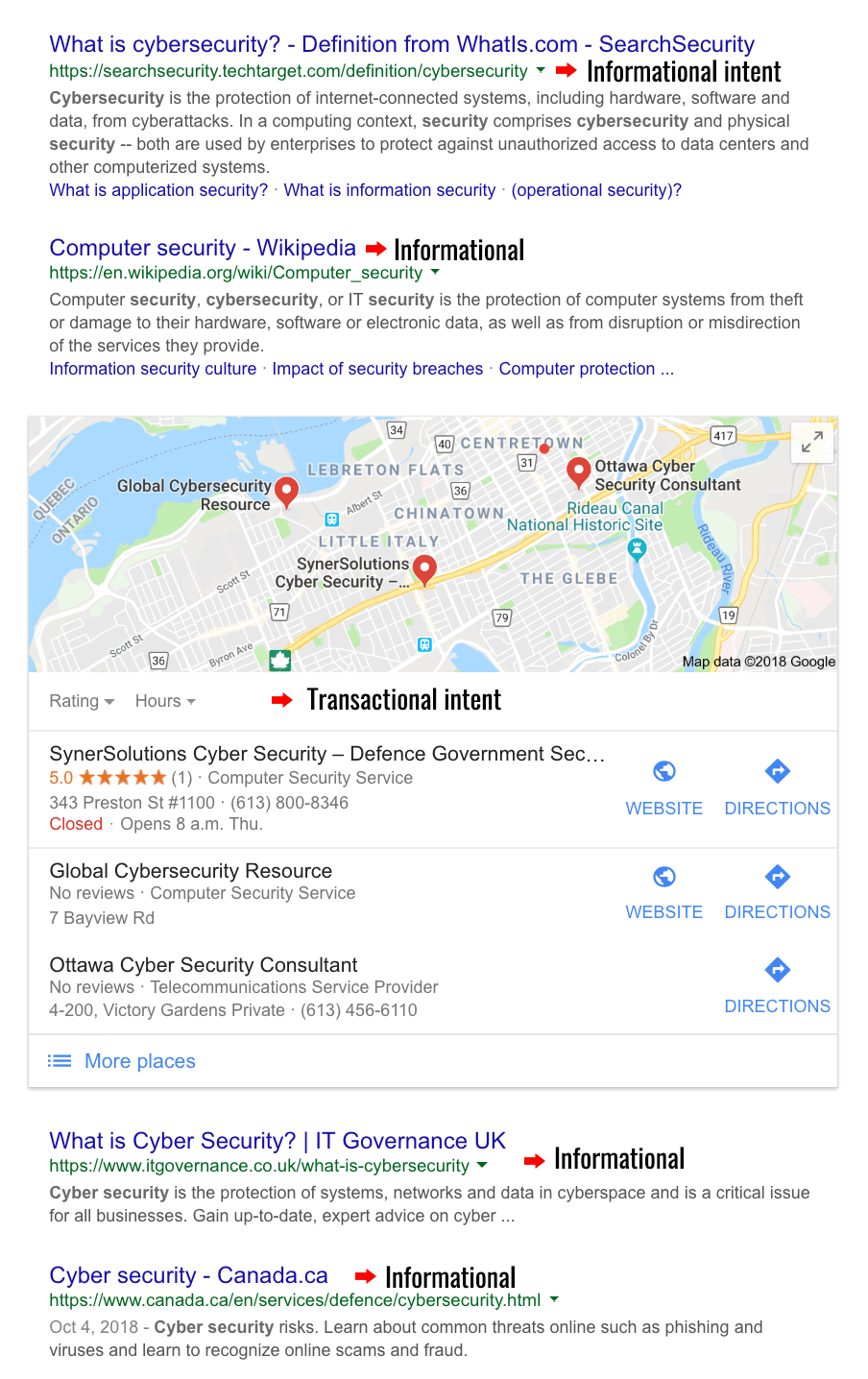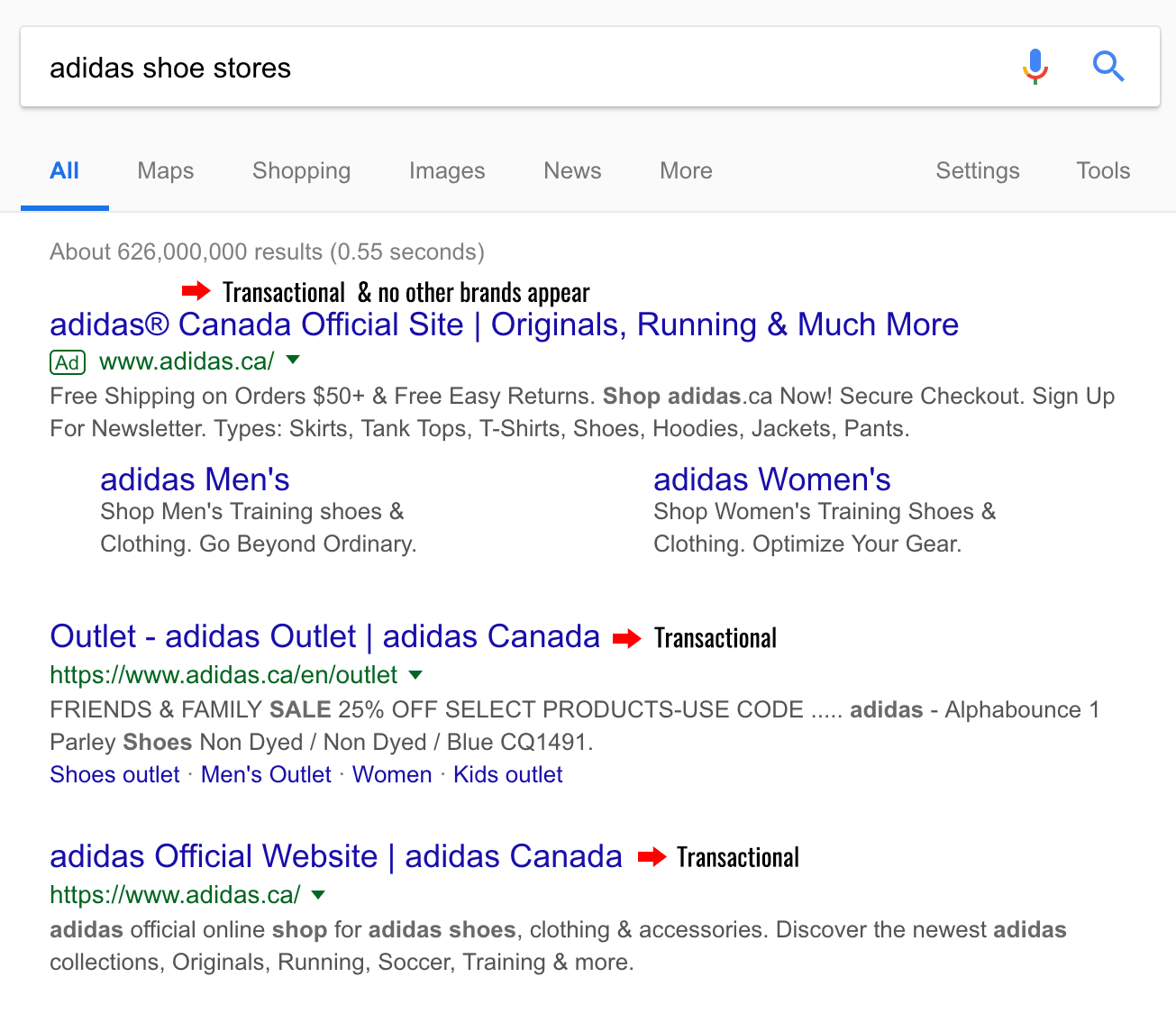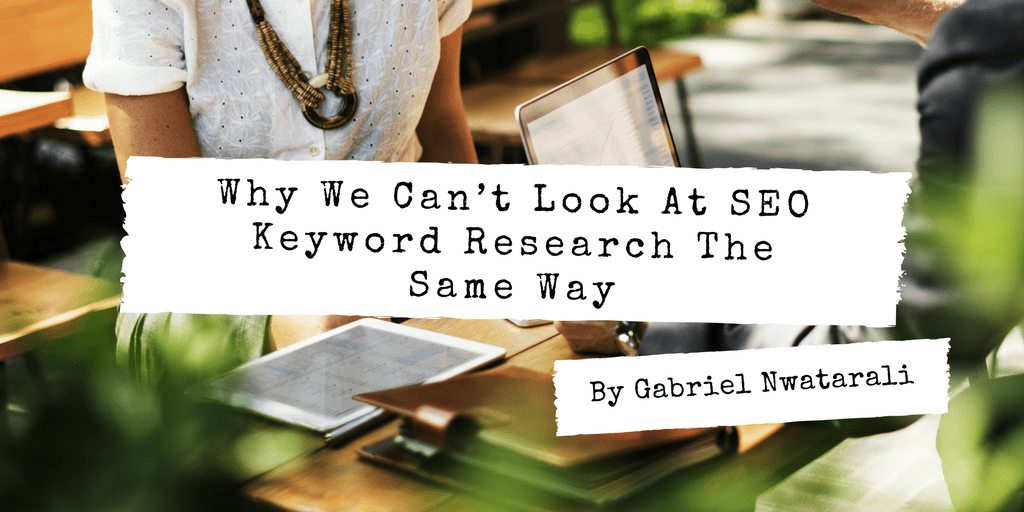The following scenario is all too common and in fact, it happened to me. You start your very first website, learn about SEO and target all the high volume keywords, neglecting the meaning behind a query or keyword intent.
Fortunately, you won’t have to make my mistake because you’re about to learn how to discover the meaning behind every single keyword you decide to target. In short, after this guide, you’ll become a keyword ninja!
Keyword intent is important for both PPC (pay-per-click) and SEO campaigns. For businesses that buy ads on Google, Bing or Yahoo, their ROI is dependent on how well they target the right keywords.
The same goes for you! As an SEO professional, a key skill is being able to identify the intent behind keywords. This is crucial because, without a keen understanding of keyword intent, many search marketing campaigns fail.
The Four Types of Search Queries
We’re going to discuss the two primary kinds of keyword intent shortly but first, it’s important that you understand the types of search queries.
1. Navigational
You’ve probably typed a website or brand name into a search engine before, hoping that it provides you with the correct URL. Well, navigational queries are searches performed to locate a particular website.
2. Informational
These types of searches are primarily focussed on obtaining information. Such as learning how to do a specific thing, checking to see what the weather is like for the week or getting tips on how to entertain your toddler.
3. Commercial Investigational
People use these kinds of keywords whenever they’re interested in a service or product but are still considering options. For instance, locating a drop shipper for your new eCommerce store, deciding on a blog platform, choosing an SEO service provider etc.
4. Transactional
I like to think of these as conversion-focussed queries because transactional keywords don’t always lead to direct monetary returns. Examples of transactional keywords include: signing up for a free email account, locating a local spa/hair salon, paying to renew your driver’s license, registering for a Wikipedia account etc.
So it depends on the goals of the business or site. In other words, these types of queries help you obtain website visitors that are most likely to perform the action you want such as making a purchase.
The Break Down to Two Primary Types
Keyword intent is broken down like so: High and low intent keywords.
High intent queries consist of commercial investigational and transactional words. Low intent keywords include informational and navigational terms.
High Intent Keyword Examples
Queries that contain words/terms like discount, deal, free shipping, for sale, coupon and buy, are usually high intent.
Furthermore, words such as best, top, cheap, review, comparisons and certain product categories (i.e. carpentry equipment), can also be considered as having high commercial/transactional intent.
Low Intent Keyword Examples
These are mostly informational and navigational queries. Keywords containing how to, best way to, what is, I need to or a specific website name, are normally low intent. These kinds of keywords will hardly lead to a sale but keep in mind that sometimes, they do.
Never Ignore Commercial Intent!
Exposure is great but when your traffic isn’t converting, it’s useless! A lot of people falsely believe that exposure is the solution. They treat SEO as if it’s a broadcast medium, however, it’s far from it. Sadly, this is still a common mistake that happens.
Success with SEO depends on your company/business/website being present when consumers are looking for your products, unlike broadcast mediums. This can mean targeting solely commercial investigational/transactional intent keywords or identifying some lucrative informational/navigational terms.
When you fail to consider keyword intent, you’re most likely exhausting your marketing budget because the traffic you acquire won’t convert in most cases. If you’re running a PPC (pay-per-click) campaign, this means that you’re paying for clicks that aren’t yielding any returns.
If SEO is your focus and you don’t identify keyword intent, the same situation applies.
How to Get Searcher Intent Hints From Search Engines
In general, if you optimize for Google, you’ll end up optimizing for their competitors too. That being noted, there will be rare occasions when you may need to optimize for specific search engines like Bing (i.e. if search competition is lower and organic potential is justified).
Search engines are good tools for gathering evidence to support what you think the intent behind a given keyword is. We’ll use Google in our examples. Due to how their algorithms operate, the web pages that satisfy users the most are often at the top of SERPs (search engine results pages).
Therefore, analyzing Google search results will give you some much-needed clues about searcher intent.
Also, if you pay attention to the PPC ads on the SERPs, you’ll gain further insights on keyword intent. Sometimes, the searcher intent behind a keyword can be several and it’s up to you to identify them. Let’s look at an example.
Assuming that our given keyword is ‘cyber security’ and our client is a provider of that service. Our goal is to find the searcher’s intent before we optimize the web page for that query.
First, we’ll start by looking at the SERP for ads. When we searched for the term, these were the ads on the search results.

As you can see from the above screenshot, we have a mix of informational and transactional (referred to as service on the image) intents. So why would an advertiser pay for informational keywords?
This is because some info queries also lead to sales. Users who are either seeking more information, investigating service providers or ready to buy use our keyword example.
Plus remember that search queries don’t have to lead to an exchange of money to be classified as transactional. If the advertiser sets up a gateway that collects email addresses before people download their whitepaper, that’s a transaction. The company gains a lead that they can nurture and eventually turn into a paying customer.
Right now, at best, we have a hypothesis. So let’s gather some more evidence from the SERPs. When we took a look at the organic search results, we see a familiar pattern.

On the screenshot, we can see that our query deserves diversity (QDD). Google is displaying results that are transactional and informational. So the keyword intent varies for this query.
Ok, let’s look at a more straightforward example like ‘Adidas shoe store’.

For this keyword, only web pages that sold Adidas shoes appeared on the SERPs with the official company’s website ranking on the top spots. The searcher intent behind this keyword is clear because we can only spot web pages that are transactional.
Lastly, you can gather further evidence to determine keyword intent by using the keyword planner tool, which was covered in the keyword research training. There, I explained why the average CPC (cost-per-click) bids could help you identify how lucrative a search term is.
In other words, whether a search query is of high or low intent can be relative to how much money advertisers are spending on it.
How to identify keyword intentClick To Tweet
I’m a freelance copywriter and SEO specialist. I aim to empower individuals and businesses with impactful marketing solutions and insights. In my downtime, I recharge by embracing the beauty of nature or cherishing moments with my loved ones. If you found value in this post, please consider sharing it.
Want a heads-up once a week whenever a new article drops?







